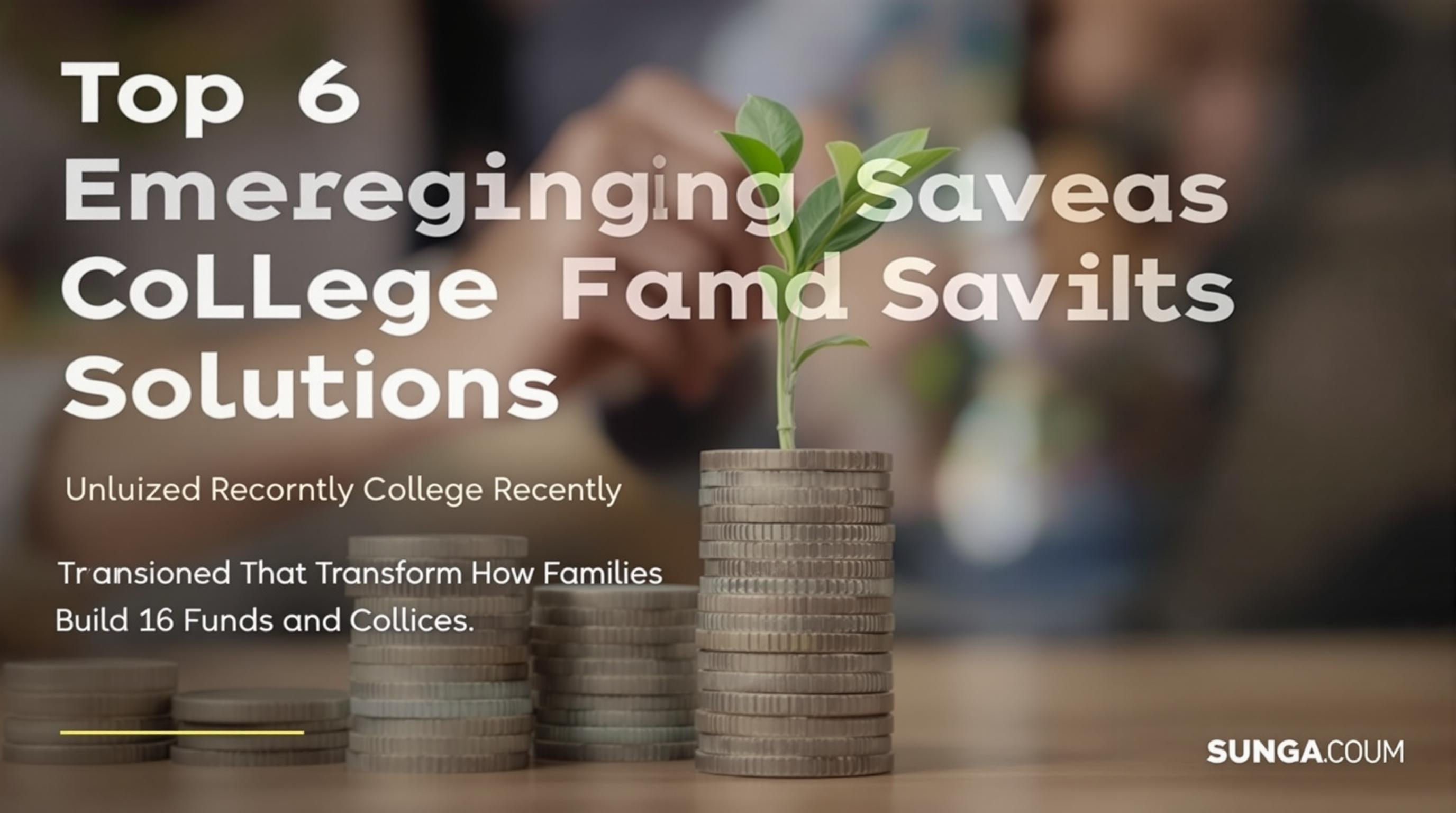Related Articles
- Unlocking Wealth: How Climate-Resilient Crops Are Shaping Financial Stability Amid Price Volatility
- Top 6 Emerging College Savings Solutions Unveiled Recently That Transform How Families Build Funds
- The surprising role of urban farming in creating economic buffers during volatile market cycles
- Unveiling the Quiet Impact of Climate Change on Municipal Bond Maturity Structures and Laddering Choices
- How Intergenerational Debt Shapes Families’ Ability to Fund Higher Education in Unseen Ways
- Top 6 Dynamic Laddering Tools from the Last Five Years Revolutionizing Interest Rate Risk Management
9 Surprising Behavioral Finance Tips to Boost Your College Savings Strategy Beyond Conventional Advice
9 Surprising Behavioral Finance Tips to Boost Your College Savings Strategy Beyond Conventional Advice
9 Surprising Behavioral Finance Tips to Boost Your College Savings Strategy Beyond Conventional Advice
1. Leverage Mental Accounting to Allocate Funds Wisely
Mental accounting is a behavioral economics concept where people treat money differently depending on its source or intended use. Instead of lumping all savings together, create distinct “accounts” for college savings, emergency funds, and other goals—even if these are informal.
This approach helps safeguard college savings from being accidentally spent and boosts motivation by making progress tangible. For example, using separate savings jars or digital sub-accounts can psychologically reinforce your commitment.
Research by Richard Thaler, a pioneering behavioral economist, shows that mental accounting can improve financial decision-making by giving structure to how people perceive and use money (Thaler, 1999).
2. Automate Contributions to Reduce Temptation
Automation removes the friction of manual saving and counters human procrastination. Setting up automatic transfers to a 529 plan or dedicated savings account ensures consistent contributions, even when motivation dips.
Behavioral studies indicate that people tend to stick to habits better when the effort required is minimal. Automatically diverting part of each paycheck circumvents decision fatigue and impulsive spending.
Additionally, tying savings automation to paydays can psychologically frame the fund as “already spent,” which reduces the feeling of loss and supports long-term commitment (Milkman et al., 2011).
3. Use Goal Visualization to Enhance Motivation
Visualization creates emotional connections to abstract financial goals, turning them into vivid experiences. Envisioning your child’s graduation or the campus environment solidifies the purpose behind saving.
Such emotional engagement can increase willingness to save by activating reward centers in the brain, making the effort feel more personally meaningful (Hershfield et al., 2011).
Try creating vision boards, virtual tours, or photo collages linked to the educational future. These tools anchor saving behavior by connecting numbers to heartfelt aspirations.
4. Frame Savings as a Gift Rather Than a Sacrifice
Traditional thinking frames saving as giving up present enjoyment, which can deter consistent effort. Behavioral finance suggests reframing saving as an active gift to your child’s future self.
This positive perspective taps into intrinsic motivation by associating saving with generosity and care, not deprivation. People are more likely to stay committed when motivated by kindness.
Encourage family discussions about the fund as a legacy or a token of love rather than a burdensome obligation. This mental shift enriches the emotional value of saving.
5. Take Advantage of Loss Aversion with Commitment Devices
Loss aversion makes people more sensitive to losing money than to equivalent gains. Commitment devices—mechanisms that lock you into saving—capitalize on this tendency.
Examples include setting penalties for early withdrawal or linking college savings to financial incentives. These constraints reduce impulsive spending by activating the fear of loss.
Studies by Kahneman and Tversky (1979) elucidate loss aversion’s power; using it creatively helps strengthen college savings discipline.
6. Avoid Over-Optimism by Planning for Realistic Market Returns
College savers often fall prey to over-optimism, assuming aggressive returns that may not materialize. Behavioral finance shows that optimistic bias can undermine preparedness.
By adopting conservative assumptions and stress-testing savings plans against market downturns, you can avoid unpleasant surprises and shortfalls.
Financial advisors recommend reliable estimates around 4-6% annual return for education funds, rather than lofty projections, fostering more grounded saving behavior (Morningstar, 2023).
7. Use Social Norms to Increase Savings
People are influenced by the behavior of peers. Sharing your college savings goals with friends or joining savings groups can leverage social norms to boost commitment.
Knowing that others are prioritizing college funds creates positive peer pressure and a sense of accountability. Public endorsements and celebrations of milestones also reinforce good behavior.
Research by Goldstein et al. (2008) highlights that social norm interventions can significantly increase desirable actions, including financial saving.
8. Break Down Large Goals into Smaller Milestones
Large savings goals can feel overwhelming and distant. Behavioral insights recommend dividing the total college cost into smaller, manageable milestones.
Tracking progress incrementally builds a sense of achievement and reduces procrastination. It also feeds dopamine reward cycles that encourage continued saving.
Consider monthly or quarterly targets, celebrating each win to sustain motivation and momentum toward the final objective.
9. Use Default Investments to Simplify Choices
Many savers face paralysis by analysis when confronted with complex investment decisions. Behavioral finance shows that setting smart default investment options encourages participation and control.
Choosing age-based or target-date funds as defaults within college savings plans reduces decision fatigue and keeps funds aligned with risk tolerance over time.
Studies like those by the National Bureau of Economic Research (Madrian & Shea, 2001) demonstrate that defaults dramatically increase enrollment and saving rates in retirement plans, a lesson transferable to education savings.
Conclusion
Traditional advice on college savings often focuses narrowly on budgeting and investment choices. By integrating behavioral finance principles such as mental accounting, automation, and social norms, savers can enhance their strategies effectively.
These surprising tips address the psychological hurdles that derail saving efforts and offer practical, evidence-based tools to build financial security for higher education.
Ultimately, blending scientific insights with thoughtful planning transforms college savings from a daunting challenge into a motivated, manageable journey.
References:
Thaler, R. (1999). Mental Accounting Matters. Journal of Behavioral Decision Making.
Milkman, K.L., et al. (2011). Using Implementation Intentions Promotes Low-Calorie Snack Choices. Health Psychology.
Hershfield, H.E., et al. (2011). Increasing Saving Behavior Through Age-Progressed Renderings of the Future Self. Journal of Marketing Research.
Kahneman, D., & Tversky, A. (1979). Prospect Theory: An Analysis of Decision under Risk. Econometrica.
Goldstein, N.J., et al. (2008). A Room with a Viewpoint: Using Social Norms to Motivate Environmental Conservation in Hotels. Journal of Consumer Research.
Madrian, B.C., & Shea, D.F. (2001). The Power of Suggestion: Inertia in 401(k) Participation and Savings Behavior. NBER Working Paper.
Morningstar. (2023). Investment Returns Overview.




